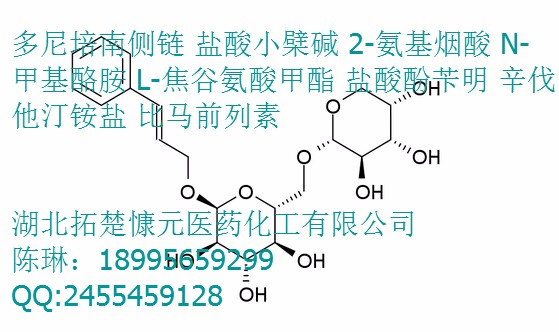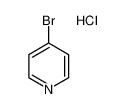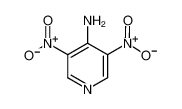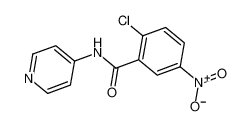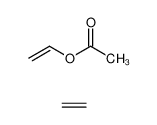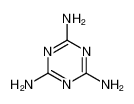| Product name | 4-aminopyridine |
|---|
| Product number | - |
|---|---|
| Other names | Dalfampridine |
| Identified uses | For industry use only. |
|---|---|
| Uses advised against | no data available |
| Company | MOLBASE (Shanghai) Biotechnology Co., Ltd. |
|---|---|
| Address | Floor 4 & 5, Building 12, No. 1001 North Qinzhou Road, Xuhui District, Shanghai, China |
| Telephone | +86(21)64956998 |
| Fax | +86(21)54365166 |
| Emergency phone number | +86-400-6021-666 |
|---|---|
| Service hours | Monday to Friday, 9am-5pm (Standard time zone: UTC/GMT +8 hours). |
Acute toxicity - Oral, Category 2
Skin irritation, Category 2
Eye irritation, Category 2
Specific target organ toxicity – single exposure, Category 3
2.2 GHS label elements, including precautionary statements| Pictogram(s) |  |
|---|---|
| Signal word | Danger |
| Hazard statement(s) | H300 Fatal if swallowed H315 Causes skin irritation H319 Causes serious eye irritation H335 May cause respiratory irritation |
| Precautionary statement(s) | |
| Prevention | P264 Wash ... thoroughly after handling. P270 Do not eat, drink or smoke when using this product. P280 Wear protective gloves/protective clothing/eye protection/face protection. P261 Avoid breathing dust/fume/gas/mist/vapours/spray. P271 Use only outdoors or in a well-ventilated area. |
| Response | P301+P310 IF SWALLOWED: Immediately call a POISON CENTER/doctor/… P321 Specific treatment (see ... on this label). P330 Rinse mouth. P302+P352 IF ON SKIN: Wash with plenty of water/... P332+P313 If skin irritation occurs: Get medical advice/attention. P362+P364 Take off contaminated clothing and wash it before reuse. P305+P351+P338 IF IN EYES: Rinse cautiously with water for several minutes. Remove contact lenses, if present and easy to do. Continue rinsing. P337+P313 If eye irritation persists: Get medical advice/attention. P304+P340 IF INHALED: Remove person to fresh air and keep comfortable for breathing. P312 Call a POISON CENTER/doctor/…if you feel unwell. |
| Storage | P405 Store locked up. P403+P233 Store in a well-ventilated place. Keep container tightly closed. |
| Disposal | P501 Dispose of contents/container to ... |
none
3.Composition/information on ingredients 3.1 Substances| Chemical name | Common names and synonyms | CAS number | EC number | Concentration |
|---|---|---|---|---|
| 4-aminopyridine | 4-aminopyridine | 504-24-5 | none | 100% |
Consult a physician. Show this safety data sheet to the doctor in attendance.
If inhaledIf breathed in, move person into fresh air. If not breathing, give artificial respiration. Consult a physician.
In case of skin contactWash off with soap and plenty of water. Consult a physician.
In case of eye contactRinse thoroughly with plenty of water for at least 15 minutes and consult a physician.
If swallowedNever give anything by mouth to an unconscious person. Rinse mouth with water. Consult a physician.
4.2 Most important symptoms/effects, acute and delayedMaterial may be fatal if inhaled, swallowed or absorbed through skin. Contact may cause burns to skin and eyes. Material affects neural transmission. In sufficient concentrations, material may cause metabolic acidosis, respiratory arrest, and cardiac arrhythmias. (EPA, 1998)
4.3 Indication of immediate medical attention and special treatment needed, if necessaryPancuronium is a pharmacologic antidote and is recommended in severely poisoned human patients. Propranolol appears to block some of the cardiac toxicity (such as cardiac arrhythmias) of 4-aminopyridine. Seizures can be treated with diazepam. In severe cases, phenobarbital or phenytoin can be given, if no response to diazepam. In case of avitrol ingestion, general symptomatic and supportive treatment includes emesis, gastric lavage, activated charcoal, and cathartic sodium thiosulfate. Bicarbonate should be added tot he fluids to treat acidosis.
5.Fire-fighting measures 5.1 Extinguishing media Suitable extinguishing mediaSuitable extinguishing media: Use water spray, alcohol-resistant foam, dry chemical or carbon dioxide. Special protective equipment for firefighters: Wear self contained breathing apparatus for fire fighting if necessary.
5.2 Specific hazards arising from the chemicalMaterial may produce irritating or poisonous gases in fire. Runoff from fire control water may give off irritating or poisonous gases. (EPA, 1998)
5.3 Special protective actions for fire-fightersWear self-contained breathing apparatus for firefighting if necessary.
6.Accidental release measures 6.1 Personal precautions, protective equipment and emergency proceduresUse personal protective equipment. Avoid dust formation. Avoid breathing vapours, mist or gas. Ensure adequate ventilation. Evacuate personnel to safe areas. Avoid breathing dust. For personal protection see section 8.
6.2 Environmental precautionsPrevent further leakage or spillage if safe to do so. Do not let product enter drains. Discharge into the environment must be avoided.
6.3 Methods and materials for containment and cleaning upPersonal precautions: Wear respiratory protection. Avoid dust formation. Avoid breathing vapours, mist or gas. Ensure adequate ventilation. Evacuate personnel to safe areas. Avoid breathing dust. Environmental precautions: Prevent further leakage or spillage if safe to do so. Do not let product enter drains. Discharge into the environment must be avoided. Methods and materials for containment and cleaning up: Pick up and arrange disposal without creating dust. Sweep up and shovel. Keep in suitable, closed containers for disposal.
7.Handling and storage 7.1 Precautions for safe handlingAvoid contact with skin and eyes. Avoid formation of dust and aerosols. Avoid exposure - obtain special instructions before use.Provide appropriate exhaust ventilation at places where dust is formed. For precautions see section 2.2.
7.2 Conditions for safe storage, including any incompatibilitiesKeep container tightly closed in a dry and well-ventilated place.
8.Exposure controls/personal protection 8.1 Control parameters Occupational Exposure limit valuesno data available
Biological limit valuesno data available
8.2 Appropriate engineering controlsHandle in accordance with good industrial hygiene and safety practice. Wash hands before breaks and at the end of workday.
8.3 Individual protection measures, such as personal protective equipment (PPE) Eye/face protectionSafety glasses with side-shields conforming to EN166. Use equipment for eye protection tested and approved under appropriate government standards such as NIOSH (US) or EN 166(EU).
Skin protectionWear impervious clothing. The type of protective equipment must be selected according to the concentration and amount of the dangerous substance at the specific workplace. Handle with gloves. Gloves must be inspected prior to use. Use proper glove removal technique(without touching glove's outer surface) to avoid skin contact with this product. Dispose of contaminated gloves after use in accordance with applicable laws and good laboratory practices. Wash and dry hands. The selected protective gloves have to satisfy the specifications of EU Directive 89/686/EEC and the standard EN 374 derived from it.
Respiratory protectionWear dust mask when handling large quantities.
Thermal hazardsno data available
9.Physical and chemical properties| Physical state | white to yellowish crystal |
|---|---|
| Colour | White crystals |
| Odour | Odorless |
| Melting point/ freezing point | 210°C(lit.) |
| Boiling point or initial boiling point and boiling range | 273°C(lit.) |
| Flammability | no data available |
| Lower and upper explosion limit / flammability limit | no data available |
| Flash point | 9°C(lit.) |
| Auto-ignition temperature | no data available |
| Decomposition temperature | no data available |
| pH | no data available |
| Kinematic viscosity | no data available |
| Solubility | no data available |
| Partition coefficient n-octanol/water (log value) | log Kow = 0.32 |
| Vapour pressure | 2.09X10-4 mm Hg at 20°C |
| Density and/or relative density | 1.26 |
| Relative vapour density | no data available |
| Particle characteristics | no data available |
no data available
10.2 Chemical stabilityStable under recommended storage conditions.
10.3 Possibility of hazardous reactionsPYRIDINE, 4-AMINO- neutralizes acids in exothermic reactions to form salts plus water. May be incompatible with isocyanates, halogenated organics, peroxides, phenols (acidic), epoxides, anhydrides, and acid halides. Flammable gaseous hydrogen may be generated in combination with strong reducing agents, such as hydrides.
10.4 Conditions to avoidno data available
10.5 Incompatible materialsStrong oxidizing agents, Strong acids, Acid chlorides, Acid anhydrides
10.6 Hazardous decomposition productsWhen heated to decomposition it emits toxic fumes of /nitrogen oxides/.
11.Toxicological information Acute toxicity- Oral: LD50 Dog oral 3.7 mg/kg
- Inhalation: no data available
- Dermal: no data available
no data available
Serious eye damage/irritationno data available
Respiratory or skin sensitizationno data available
Germ cell mutagenicityno data available
CarcinogenicityCancer Classification: Group D Not Classifiable as to Human Carcinogenicity
Reproductive toxicityno data available
STOT-single exposureno data available
STOT-repeated exposureno data available
Aspiration hazardno data available
12.Ecological information 12.1 Toxicity- Toxicity to fish: LC50; Species: Lepomis macrochirus (Bluegill); Conditions: freshwater, static; Concentration: 2820 ug/L for 96 hr (95% confidence interval: 2300-3500 ug/L)
- Toxicity to daphnia and other aquatic invertebrates: EC50; Species: Daphnia magna (Water Flea) juvenile; Conditions: freshwater, static, 21°C, hardness 40 mg/L CaCO3; Concentration: 17000 ug/L for 24 hr; Effect: intoxication, immobilization /formulation
- Toxicity to algae: no data available
- Toxicity to microorganisms: no data available
AEROBIC: 4-Aminopyridine, present at 100 mg/L, reached 0% of its theoretical BOD in 4 weeks using an activated sludge inoculum at 30 mg/L in the Japanese MITI test(1). In a screening test, which utilized 5 mL garden soil suspensions with glucose, yeast extract and mineral salts, 4-aminopyridine completely degraded in greater than 170 days under both aerobic and anaerobic conditions(2). For flooded soils, 76.4 and 79.0% of the original radio labeled 4-aminopyridine was mineralized to CO2 within 60 days in a Fargo clay and Barnes sandy loam soil at 20°C and pHs of 7.7, and 7.4, respectively(3). In addition, only 6, 18 and 24% of the original radio labeled 4-aminopyridine was mineralized to CO2 within 60 days in a Barnes sandy loam, Towner loamy fine sand and Fargo clay at 20°C and pHs of 7.4, 7.2 and 7.7, respectively(3). An aerobic biological screening study, which utilized a 10 mg/L yeast extract and an Aeric Ochraqualf soil for inocula, indicated that 4-aminopyridine is not readily biodegradable(4); at 28°C and a pH of 7, less than 1% of an initial 14.6 ppm of 4-aminopyridine was mineralized in greater than 30 days as evidenced via the release of inorganic nitrogen(4). An acclimated aerobic soil grab sample study demonstrated slow biodegradation of 4-aminopyridine(5). 4-Aminopyridine was added to Fincastle silt loam (Aeric Ochraqualf) with a pH of 6.7 and incubated at 25°C(5); within 64 days, 6.1% of the available nitrogen was released to inorganic forms(5); sterilized controls lost 14.9% of the starting material to volatilization, but did not release inorganic nitrogen(5). Aerobic biotic half-lives of 4-aminopyridine in soil are reported to range between 3 and 32 months(6).
12.3 Bioaccumulative potentialBCF values of <0.2-0.6 (at 50 mg/L) and <1.8-7.2 (at 5 mg/L concentration) were measured in carp (Cyprinus carpio) which were exposed over an 8-week period for 4-aminopyridine(1). According to a classification scheme(2), these BCF ranges suggest the potential for bioconcentration in aquatic organisms is low.
12.4 Mobility in soilUsing a structure estimation method based on molecular connectivity indices(1), the Koc for 4-aminopyridine can be estimated to be 35(SRC). According to a classification scheme(2), this estimated Koc value suggests that 4-aminopyridine is expected to have very high mobility in soil. The pKa of 4-aminopyridine is 9.17(3), indicating that this compound will exist predominantly in cation form in the environment and cations generally adsorb more strongly to soils containing organic carbon and clay than their neutral counterparts(4). In addition, aromatic amines are expected to bind strongly to humus or organic matter in soils due to the high reactivity of the aromatic amino group(5,6), suggesting that mobility may be much lower in some soils(SRC).
12.5 Other adverse effectsno data available
13.Disposal considerations 13.1 Disposal methods ProductThe material can be disposed of by removal to a licensed chemical destruction plant or by controlled incineration with flue gas scrubbing. Do not contaminate water, foodstuffs, feed or seed by storage or disposal. Do not discharge to sewer systems.
Contaminated packagingContainers can be triply rinsed (or equivalent) and offered for recycling or reconditioning. Alternatively, the packaging can be punctured to make it unusable for other purposes and then be disposed of in a sanitary landfill. Controlled incineration with flue gas scrubbing is possible for combustible packaging materials.
14.Transport information 14.1 UN Number| ADR/RID: UN2671 | IMDG: UN2671 | IATA: UN2671 |
| ADR/RID: AMINOPYRIDINES (o-, m-, p,) |
| IMDG: AMINOPYRIDINES (o-, m-, p,) |
| IATA: AMINOPYRIDINES (o-, m-, p,) |
| ADR/RID: 6.1 | IMDG: 6.1 | IATA: 6.1 |
| ADR/RID: II | IMDG: II | IATA: II |
| ADR/RID: no | IMDG: no | IATA: no |
no data available
14.7 Transport in bulk according to Annex II of MARPOL 73/78 and the IBC Codeno data available
15.Regulatory information 15.1 Safety, health and environmental regulations specific for the product in question| Chemical name | Common names and synonyms | CAS number | EC number |
|---|---|---|---|
| 4-aminopyridine | 4-aminopyridine | 504-24-5 | none |
| European Inventory of Existing Commercial Chemical Substances (EINECS) | Listed. | ||
| EC Inventory | Listed. | ||
| United States Toxic Substances Control Act (TSCA) Inventory | Listed. | ||
| China Catalog of Hazardous chemicals 2015 | Listed. | ||
| New Zealand Inventory of Chemicals (NZIoC) | Listed. | ||
| Philippines Inventory of Chemicals and Chemical Substances (PICCS) | Listed. | ||
| Vietnam National Chemical Inventory | Not Listed. | ||
| Chinese Chemical Inventory of Existing Chemical Substances (China IECSC) | Listed. | ||
| Creation Date | Aug 11, 2017 |
|---|---|
| Revision Date | Aug 11, 2017 |
- CAS: Chemical Abstracts Service
- ADR: European Agreement concerning the International Carriage of Dangerous Goods by Road
- RID: Regulation concerning the International Carriage of Dangerous Goods by Rail
- IMDG: International Maritime Dangerous Goods
- IATA: International Air Transportation Association
- TWA: Time Weighted Average
- STEL: Short term exposure limit
- LC50: Lethal Concentration 50%
- LD50: Lethal Dose 50%
- EC50: Effective Concentration 50%
- IPCS - The International Chemical Safety Cards (ICSC), website: http://www.ilo.org/dyn/icsc/showcard.home
- HSDB - Hazardous Substances Data Bank, website: https://toxnet.nlm.nih.gov/newtoxnet/hsdb.htm
- IARC - International Agency for Research on Cancer, website: http://www.iarc.fr/
- eChemPortal - The Global Portal to Information on Chemical Substances by OECD, website: http://www.echemportal.org/echemportal/index?pageID=0&request_locale=en
- CAMEO Chemicals, website: http://cameochemicals.noaa.gov/search/simple
- ChemIDplus, website: http://chem.sis.nlm.nih.gov/chemidplus/chemidlite.jsp
- ERG - Emergency Response Guidebook by U.S. Department of Transportation, website: http://www.phmsa.dot.gov/hazmat/library/erg
- Germany GESTIS-database on hazard substance, website: http://www.dguv.de/ifa/gestis/gestis-stoffdatenbank/index-2.jsp
- ECHA - European Chemicals Agency, website: https://echa.europa.eu/







